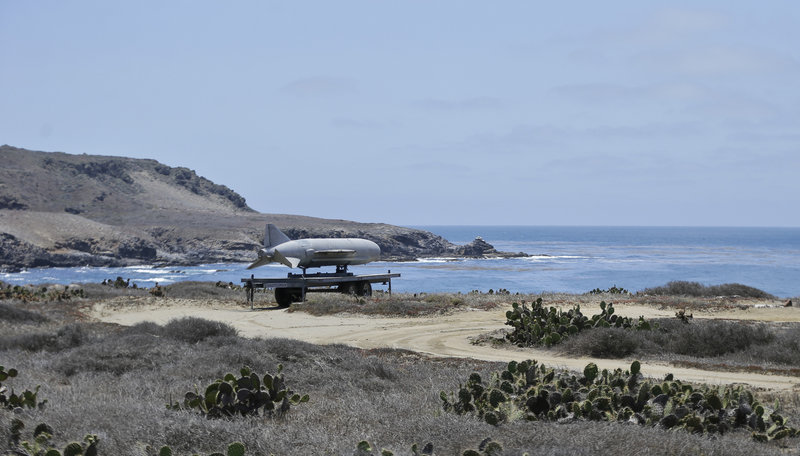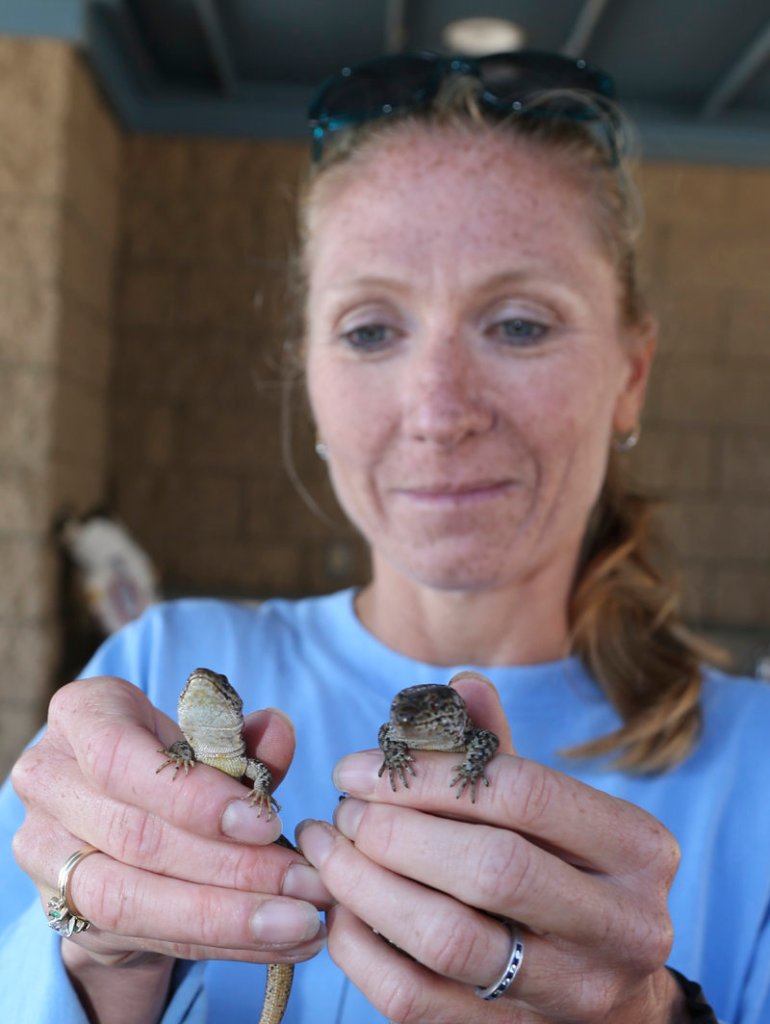SAN CLEMENTE ISLAND, Calif. – The sign leaves no doubt about the risk in entering the steep seaside hills that North America’s rarest bird calls home: “Danger. Boom. Explosives. Unexploded Ordnance and Laser Range in Use. Keep Out.”
Despite the weekly explosions that rock this Navy-owned island off the Southern California coast, the San Clemente Island loggerhead shrike has been rebounding from the brink of extinction here — the military’s only ship-to-shore bombardment range.
The black, gray and white songbird – which has gone from a low of 13 in the 1990s to 140 today – is among scores of endangered species thriving on military lands during the past decade.
For many, it’s a surprising contrast, with troops preparing for war, yet taking precautions to not disturb animals such as the red-cockaded woodpecker and thumb-size Pacific pocket mouse. But military officials downplay the relationship, saying they’re concerned primarily with national security.
Defense spending on threatened and endangered species jumped nearly 45 percent over the past decade from about $50 million a year in 2003 to about $73 million in 2012. The military protects roughly 420 federally listed species on more than 28 million acres, according to the Pentagon.
The Defense Department is increasingly partnering with environmental groups to buy critical habitats that can act as buffer zones around bases, including a deal announced in June near the Army’s Joint Base Lewis-McChord in Washington state that will restore prairie habitat.
“I’ve seen entire convoys with dozens of soldiers come to a screeching halt because a desert tortoise was crossing the road,” Pentagon spokesman Mark Wright said.
Environmentalists say there has been an attitude shift by the Pentagon, which has a history of seeking exemptions from environmental laws in the name of national security.
“They’ve come a long way and do deserve credit,” said Mark Delaplaine, of the California Coastal Commission, which has battled the Navy over sonar testing that it believes harms marine mammals. “They pummel areas but also protect areas.”
Generals shudder at being considered tree-huggers. But the military’s top brass also realizes protecting wildlife can, in turn, protect training ranges.
The more wildlife thrives, the fewer the restrictions. If endangered species populations decline further, the military could face being told to move trainings out of areas.
“Our conservation efforts are first and foremost focused on protecting readiness and eliminating the need for restrictions on training,” said John Conger, acting deputy undersecretary of defense for installations and environment.
Defense Department properties have the highest density of threatened and endangered species of any federal land management agency, according to NatureServe, which tracks wildlife.
On average, military lands boast 15 threatened and endangered species per acre — nearly seven times more per acre than the U.S. Forest Service, according to the Pentagon.
Security keeps huge swaths of terrain off-limits to humans, turning training grounds into de facto wildlife refuges.
Bases have inadvertently preserved wetlands, old-growth forests and tall-grass prairies by halting urban sprawl.
The Marine Corps’ 125,000-acre Camp Pendleton is the largest undeveloped coastal stretch between Los Angeles and San Diego with more than 15 federally listed wildlife species.
In some areas, native plants that thrive from a natural cycle of wildfires have benefited from the artillery exercises, according to environmentalists. Troops also often use only a limited area for training, including on San Clemente.
Defense Department biologists have helped military branches boost wildlife numbers, according to environmentalists.
The endangered perch-like fish called the Okaloosa Darter was downgraded in 2011 to threatened after Eglin Air Force base restored its watershed with erosion control projects, according to the U.S. Fish and Wildlife Service.
The threatened San Clemente Island lizard, which now numbers more than 20 million, is being considered for removal from federal listing.
San Clemente Island gained its unique status after protests shut down the Navy’s only other such bombardment range on Vieques Island off the coast of Puerto Rico, where the Navy trained from 1941 until 2003. The property is now a national wildlife refuge.
For biologists, what’s been surprising is the resiliency shown by certain species to the thundering drills. The shrike nests even in the center of the bombing range called the “boom box.”
“The shrike seems to be unaffected by the loud noises,” said Navy biologist Melissa Booker. “We have a role to support the military’s mission, and we have a role to protect species. The two things don’t have to contradict each other.”
Send questions/comments to the editors.




Success. Please wait for the page to reload. If the page does not reload within 5 seconds, please refresh the page.
Enter your email and password to access comments.
Hi, to comment on stories you must . This profile is in addition to your subscription and website login.
Already have a commenting profile? .
Invalid username/password.
Please check your email to confirm and complete your registration.
Only subscribers are eligible to post comments. Please subscribe or login first for digital access. Here’s why.
Use the form below to reset your password. When you've submitted your account email, we will send an email with a reset code.